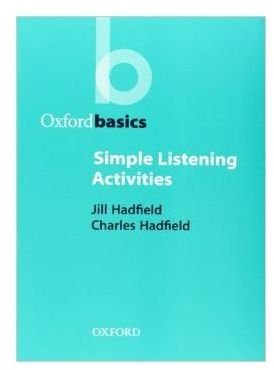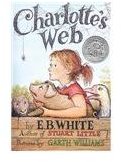Books for Teaching Listening Skills in the Classroom: From 1st to 12th Grade
Listen Up!
Listening skills need to be taught as much as writing, reading or critical thinking, however, this category is often overlooked in the
classroom because listening, as a skill, is often taken for granted. We listen all the time - to directions, to a speaker or just in regular conversation, so it seems natural not to teach listening as a separate entity. Students who aren’t taught listening, though, are done a great disservice because most of their information during the school day comes from what they hear. Valuable information can fly past the student who is unaware of what he should be listening for.
Teaching listening helps students become better at focusing their attention on the important information. Books of listening activities like the ones found below show the teacher how to do this effectively. Teachers can also reinforce listening skills while using regular classroom material.
Here are some books ideas to use as teacher resources to encourage listening:
-
Teaching Listening Comprehension by Penny Ur
-
Simple Listening Activities by Jill Hadfield

-
Opposite Day: Upside Down Questions to Keep Students Talking and Listening by Brooklyn Lindsey
-
Sing Along and Learn: Following Directions by Ken Sheldon
First Through Third Grade
In the early school years, students are just beginning to learn to read on their own. They can follow the plots of short books they read

made up of words they already know. However, at this age, students build vocabulary and meaning more through listening than reading. By listening, they can follow along and understand stories far above their reading level. Therefore, it is more beneficial to the student to choose longer books than short books for listening activities.
Good book choices for listening activities at this level are stories with strong protaganists whom the children can empathize with. Some examples include:
- Stuart Little by E.B. White
- Mr. Popper’s Penguins by Richard Atwater
- The Ramona Collection by Beverly Cleary
- Charlotte’s Web by E.B. White
- Matilda by Roald Dahl
When reading aloud to children at these ages, use a lot of Socratic questioning before, during and after the story. Ask questions such as; Why do you think a character did a certain action? What do you think will happen next? Have you experienced anything like this in your life? What do you think a certain word means? What would you have done differently in a certain situation? Does a certain character remind you of anybody you know? How so? Open-ended questions like these require active listening by the students and allow answers that can build classroom discussion. Encourage students to respond to one another, adding onto a previous point or giving an alternative scenario.
In second and third grade, students can infer meaning, understand double meanings of words, and understand some puns and jokes. Ask questions that point out these literary tools. Roald Dahl’s stories are filled with double meanings, puns and irony.
Fourth Through Seventh Grade
Around fourth grade, students develop the ability to listen with different purposes in mind. They can take notes during lecture, listen for facts from a news report and understand directions to solve problems. As students progress, they develop basic logic and reasoning skills. They can separate fact from opinion, and discern tone and sincerity in speech.
In these grade levels, students are becoming more aware of their preferences and hobbies. They are more social in and out of school, and take part in activities such as sports and drama. They begin to read about their interests for greater understanding, and generally become more aware of the world around them.
Poetry becomes an important listening tool for students of this age range because of its use of imagery, rhyming and descriptive language. Shel Silverstein’s books are good for younger students. You Come Too is an anthology of Robert Frost poems chosen for students in this age range.
Alice in Wonderland works well for this age level because of its language, use of imagery, metaphors and rich characters. Detective books, such as Whodunit? Crime Puzzles and You’re the Detective are excellent for listening activities because they test deductive reasoning and problem solving. Children really need to listen critically to solve the puzzles, which they enjoy at this age.
Non-fiction begins to play a larger role in the students’ learning repetoire. Read magazine articles, news articles, speeches and short, descriptive non-fiction to students with the intention of pulling out facts, developing questions based on the pieces and understanding the different purposes of written communication.
Books mentioned above and more suggestions:
- Where the Sidewalk Ends by Shel Silverstein
- You Come Too: Favorite Poems for Readers of All Ages by Robert Frost
- Whodunit? Crime Puzzles by Hy Conrad
- You’re The Detective by Lawrence Treat
- Alice in Wonderland by Lewis Carroll
- Listening Games for Elementary Grades by Margaret Maxwell
Eighth Through Twelfth Grade
As the student matures, his listening skills become more important because he will take notes from lectures in most of his classes. Students learn to capture the pertinent information from lectures and videos to reinforce what they hear and read. In this age range, teachers use role-playing and acting to enhance comprehension and listening skills.
Most state standards require some Shakespeare in high school. His work challenges students’ listening abilities because of the language barrier, his use of double entendres and the depth of plot and character. When students act out scripts in class, it helps students understand the text better than by just assigning the reading as homework.
Debate enhances students’ listening skills because it forces them to pay attention to arguments in order to form counter-arguments. Students must think critically to pick out falacious reasoning and defend their own position.
Leo Jones’ book Great Ideas is a collection of activities designed to increase listening and speaking skills. Other creative books students of this age range enjoy include the Jury Trials in the Classroom series by Betty See. Her books set up court cases for students to act out. The classroom becomes a court room that requires active listening by the students.
These book suggestions will aid in developing listening skills that are a critical part of every day life. Your students will benefit from them in the future as they continue in their schooling and into adulthood in the working world.
References
- Spratt, Mary. Tuning In: Elementary Listening Skills. Longman. 1989.
- Language Arts: Listening Comprehension
- Reading and Language: First Grader Listening Milestones
- Education.com. The Thinking Skills of Observing, Listening, and Comprehending, by T.N. Turner.
